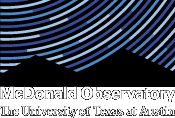Meet the Universe’s Earliest Confirmed Black Hole: A Monster at the Dawn of Time
By Emily Howard
An international team of astronomers, led by UT Austin’s Cosmic Frontier Center, has identified the most distant black hole ever confirmed. It and the galaxy it calls home, CAPERS-LRD-z9, are present 500 million years after the Big Bang. That places it 13.3 billion years into the past, when our universe was just three percent of its current age. As such, it provides a unique opportunity to study the structure and evolution of this enigmatic period.

